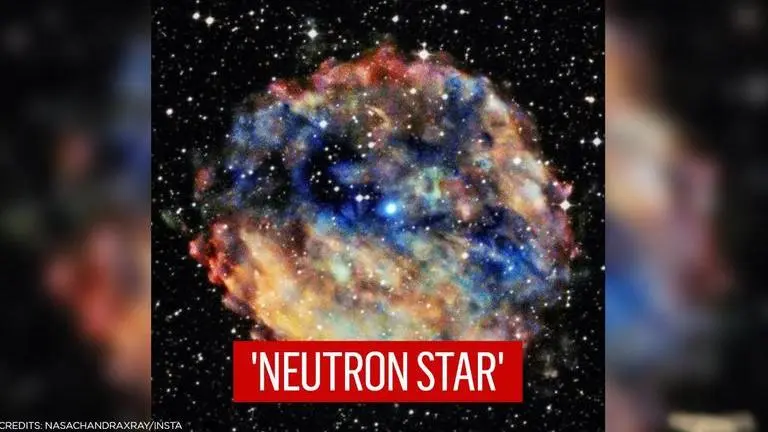Updated 18 January 2021 at 14:25 IST
NASA posts image of neutron star, shares mind-blowing fact about it
National Aeronautics and Space Administration (NASA) has once again left the internet intrigued with its latest post about a Neutron star.
- Science News
- 2 min read

National Aeronautics and Space Administration (NASA) has once again left the internet intrigued with its latest post about a Neutron star. Sharing the photograph of supernova remnant RCW 103, the space agency pointed out at the neutron star located at its heart. Astronomers define a neutron star as the collapsed core of a massive supergiant star after it undergoes a supernova explosion.
The mesmerising photograph captures the remnants of RCW 103 supernova explosion, which lies 10,000 light-years away from constellation Norma. At the centre of the picture, there is a bright shining spot, which NASA describes as the Neutron star or the star which had exploded. The space agency then further revealed that the mass of one cube matter of the neutron star would roughly be equal to the entire base of mount Everest.
'Densly packed matter'
“Matter in a neutron star is packed together so tightly that a sugar-cube-sized amount of neutron star material would weigh more than 1 billion tons — roughly the weight of Mount Everest!,” NASA’s Chandra Ray observatory which shared the picture described.
Since shared, the post has left people flabbergasted and has garnered over 20,000 likes. In addendum, netizens have flocked to the post with various questions and comments. "Fascinating dear chandra", commented a user. "how far it is from our Earth?" questioned another. Meanwhile, another joked, "And we were worried about the extra pounds from the holidays", while another said, "Cool".
Advertisement
While Supernovas or dead stars often make headlines, there are millions of young stars glinting across the universe too. Just yesterday, NASA shared an image of "5 million years young and dazzling star cluster" on its official Instagram account. The US space agency shared the image with a caption stating that the colour of a star is directly linked to its surface temperature. NASA said that the hotter the star, the shorter the wavelength of light it will emit. "The hottest of stars are blue or blue-white and the cooler ones are red or red-brown," it added.
Advertisement
Published By : Riya Baibhawi
Published On: 18 January 2021 at 14:25 IST


